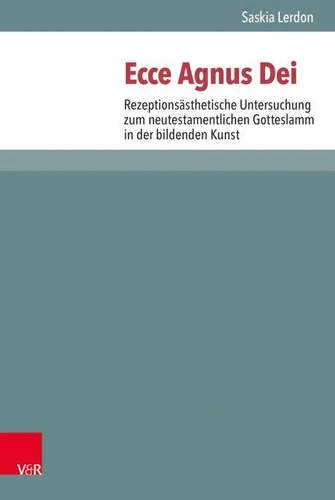Ecce Agnus Dei. Rezeptionsästhetische Untersuchung zum neutestamentlichen Gotteslamm in der bildenden Kunst
Par : , , , ,Formats :
Disponible dans votre compte client Decitre ou Furet du Nord dès validation de votre commande. Le format PDF est :
- Compatible avec une lecture sur My Vivlio (smartphone, tablette, ordinateur)
- Compatible avec une lecture sur liseuses Vivlio
- Pour les liseuses autres que Vivlio, vous devez utiliser le logiciel Adobe Digital Edition. Non compatible avec la lecture sur les liseuses Kindle, Remarkable et Sony
 , qui est-ce ?
, qui est-ce ?Notre partenaire de plateforme de lecture numérique où vous retrouverez l'ensemble de vos ebooks gratuitement
Pour en savoir plus sur nos ebooks, consultez notre aide en ligne ici
- Nombre de pages293
- FormatPDF
- ISBN978-3-647-57082-2
- EAN9783647570822
- Date de parution07/09/2020
- Protection num.pas de protection
- Taille25 Mo
- Infos supplémentairespdf
- ÉditeurVandenhoeck & Ruprecht
Résumé
The Lamb of God has been a recurring motif in art history for two millennia. Saskia Lerdon investigates the impact of this christological metaphor on European art. Finding numerous examples within art history, she illustrates that this metaphor has been consistently reinterpreted and reconfigured in the artists' historical situations. A key question is: Did new meanings develop in the course of this historical process beyond the original intentions of the authors of the New Testament? Hermeneutical theories such as those of Hans-Georg Gadamer help to analyse the material in addressing this question.
The Lamb of God has been a recurring motif in art history for two millennia. Saskia Lerdon investigates the impact of this christological metaphor on European art. Finding numerous examples within art history, she illustrates that this metaphor has been consistently reinterpreted and reconfigured in the artists' historical situations. A key question is: Did new meanings develop in the course of this historical process beyond the original intentions of the authors of the New Testament? Hermeneutical theories such as those of Hans-Georg Gadamer help to analyse the material in addressing this question.



